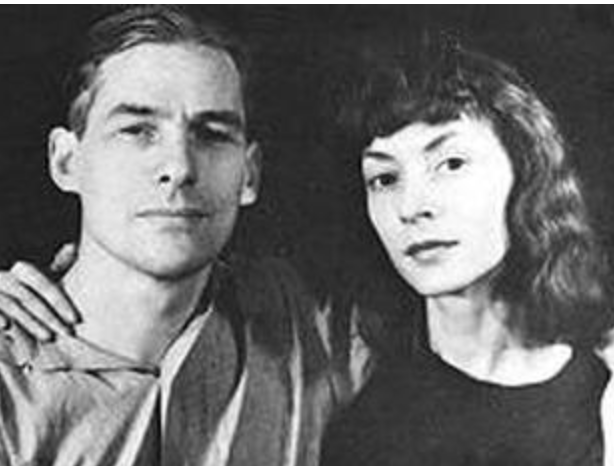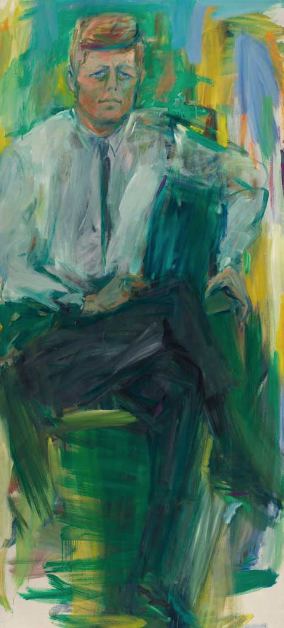Artist Profile: Elaine de Kooning
Elaine de Kooning was a pivotal, first-generation artist of the abstract expressionist movement. She was important not just because of her talented and famous husband, William de Kooning, but also for her skill, passion and deeply committed belief in the art movement that was changing art in America and across the western world from the 1930s through the 1950s. In addition to her classic abstract expressionist work, she was also known for her portraiture and for her art criticism in prestigious art publications. Elaine was an intellectual who could easily captivate a room with her wit, charm and beauty.
Elaine Fried was born on March 12, 1920 and grew up in Brooklyn, New York, the oldest among three siblings. Her mother inspired her to be creative from a young age, encouraging her to draw, taking her to museums and reportedly hanging reproductions of Rembrandt painted by women throughout the house. Elaine said she “began life with the assumption that half the painters in the world were women”. Later, she studied at Hunter College and the Leonardo da Vinci Art School.
Pulling from multiple styles, including expressionism and figurative painting, Elaine’s rich and vibrant work drew the attention and admiration of many in the art world as well as fellow artists. Captivating abstract work, as well as more realistic portraits and still lifes bestowed her reputation as a well rounded and authentic artist. Beautiful abstract paintings, such as “Sunday Afternoon” (1957), and “Bacchus” (1983), are some favorites.
In her mid 20s, Elaine married fellow artist Willem de Kooning. After living in abject poverty for several years in lower Manhattan, they decided to purchase a small place in the Hamptons of Long Island and were the early settlers of this soon to be artist’s haven. Though Elaine dedicated a large portion of her life to supporting and promoting Bill’s work, she undoubtedly had her own career and pursued her own art alongside her husband. Though women were expected to take care of their husband and home, Elaine rejected that notion. Bill famously said we were “like two bachelors shacked up…what we two need is a good wife".”
However, Bill and Elaine had a complicated relationship that encompassed as much heartache and tribulations as it did love and support. Both were heavy drinkers and they had an open relationship with multiple lovers that came and went. Bill had one child, Lisa De Kooning, with his mistress Joan Ward. They lived apart for much of their later years. Some speculate that one of the main reasons Bill became famous was because of who Elaine chose to sleep with. Her lovers were mostly influential critics, writers and other important members of the art world who would bring more positive reviews and support of Bill and his work. It is hard to know the truth of this but it is most certainly true that this group of cohorts and avant garde artists were known to be promiscuous, heavy partiers but they also carried a deep passion and intellectual curiosity about the new art that was being developed.
Elaine is mostly known for her abstract expressionist style but she was also a skilled portrait artist. She had a talent for being able to capture the essence of the subject in her portrait pieces. She rendered their prominent features, however the paintings were abstract. Her brushstrokes and color choice helped her reveal the essence of the subject. Although the features were clear enough that an audience could immediately tell who the subject of the painting was, Elain’es use of colors and abstract lines conveyed the true atmosphere of the paintings. One of Elaine’s most famous portraits was of John F Kennedy, commissioned by the Truman library. After his assassination, it took her more than a year to bring herself to paint again. She was also commissioned to do a series for the New York Mets, her favorite baseball team.
Elaine also was an art critic and reviewed many of her peers, including Arshile Gorky, Franz Kline, David Smith, and Jackson Pollok. Her reviews were thought provoking, bold and insightful. She wrote for many publications including ArtNews and taught at several universities. She cared deeply about art, and her ability to analyze the work of others was one of her many talents. She was a versatile artist, and was professional when assessing the work of her fellow painters. She was passionate about the movement and, in an art world full of disdain and suspicion of the abstract expressionist movement, she did her reviews in defense of it.
In her later years, Elaine travelled extensively and had a home and studio in long island. In the early 1980s she was inspired by the cave paintings in Lascaux, France and commenced a series of bull paintings called “Cave Walls” as well as a series of ink drawings.
Elaine had multiple solo shows throughout her career and has clearly cemented her place in history as a highly acclaimed and important member of the first generation of Abstract Expressionists. Elaine died of lung cancer at the age of 70 on February 1, 1988. Her legacy lives on through artist residencies in her former long island home and through museums and private collections.
Check out these videos to learn more about Elaine de Kooning-
https://youtu.be/HxIA3QE_3Uo
https://youtu.be/m4vWwlduSY8
Acknowledgements:
- A special thank you to Ivy Grosk for assisting in the research and draft of this article.
- A major inspiration and source of this profile is pulled from Mary Gabriel’s Ninth Street Women.







